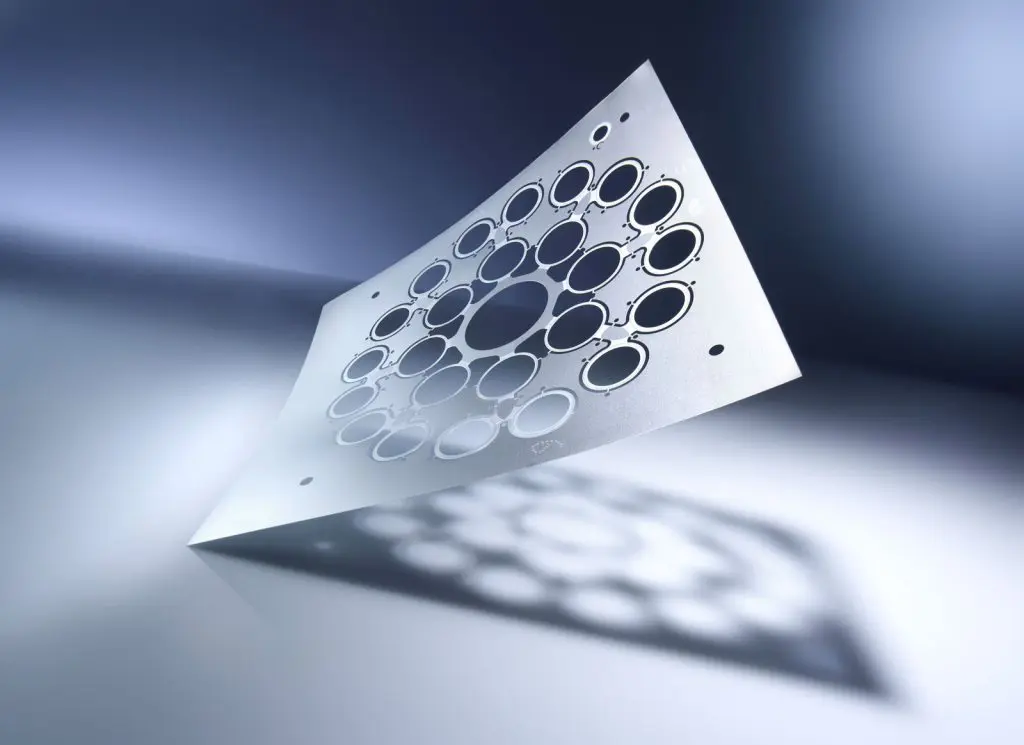When it comes to precision fabrication, photochemical etching is a game-changer. But what exactly is photochemical etching, and why does it matter so much in industries that demand high precision? Let’s dive into the fascinating world of this technology and explore its profound impact on precision fabrication.
Photochemical etching, also known as photoetching or chemical milling, is a subtractive manufacturing process that uses chemical etchants to create intricate patterns on metal surfaces. The process is highly precise, allowing manufacturers to achieve detailed designs that are often impossible with traditional fabrication methods.
Why is Precision Fabrication Important?
The foundation of manufacturing sectors requiring precise and complex components is precision fabrication. Whether it’s for the medical, automotive, or aerospace industries, precision guarantees that every component meets strict specifications and operates as intended. Here’s where photochemical etching comes into play, providing a special combination of precision, effectiveness, and adaptability.
Advantages of Photochemical Etching in Precision Fabrication
What makes photochemical etching so advantageous for precision fabrication? Let’s explore some key benefits.
High Precision and Accuracy
Photochemical etching allows for extremely fine detail, achieving tolerances as tight as ±0.01mm. This high level of precision is crucial in industries like electronics and aerospace, where even the slightest deviation can lead to significant issues.
Cost-Effectiveness and Efficiency

Photochemical etching does not require expensive tools or equipment, in contrast to other production processes. Because of this, it’s an affordable choice for both modest and massive manufacturing runs. The procedure is also really rapid, which increases its effectiveness even more.
Flexibility with Design and Prototyping
One of the standout features of photochemical etching is its flexibility. It allows for rapid prototyping and design changes without the need for new tools or dies. This adaptability is invaluable in industries that are constantly evolving and require frequent updates to their designs.
Minimal Material Waste
Photochemical etching is a meticulous procedure that reduces waste of materials. Very little scrap is left over since the chemical solution only removes the exposed metal. This is in line with sustainable production techniques in addition to cutting expenses.
Applications of Photochemical Etching in Different Industries
Photochemical etching is a versatile process with applications across various industries. Let’s take a closer look at how it’s used.
Electronics Industry
In the electronics industry, photochemical etching is used to produce precision parts like circuit boards, EMI/RFI shielding, and connectors. The ability to create highly detailed and precise components is essential in this field, where miniaturization and accuracy are critical.
Aerospace Industry
Photochemical etching is utilized in the aircraft sector to create robust, lightweight parts like filtration screens and fuel injectors. This method’s accuracy guarantees that every item satisfies the demanding specifications of aerospace applications.
Medical Devices
Photochemical etching is used in the medical profession to make complex parts for implanted devices, diagnostic tools, and surgical instruments. For the safety and comfort of patients, the procedure makes it possible to produce intricate, microscopic pieces with smooth edges.
Automotive Industry
The automotive industry benefits from photochemical etching in the production of precision parts like fuel cell components, engine gaskets, and micro-sensors. The ability to produce lightweight, durable parts contributes to the overall performance and efficiency of vehicles.
Comparison with Other Fabrication Methods
How does photochemical etching stack up against other fabrication methods?
Photochemical Etching vs. Laser Cutting
While accuracy is provided by both photochemical etching and laser cutting, the former offers a better degree of detail without resulting in thermal distortion. For thicker materials, however, laser cutting is quicker. The particular needs of the project will determine which option is best.
Photochemical Etching vs. Mechanical Machining
Mechanical machining is often used for larger, less detailed parts. Photochemical etching, on the other hand, excels in producing intricate designs with minimal material stress. This makes it the preferred choice for small, detailed components.
Before beginning full-scale manufacturing, Tmn provides a number of samples to let clients confirm the product’s quality and requirements, ensuring the finished product lives up to all expectations.
Please feel free to contact us with any queries at +8613603056883 by phone, WeChat, or WhatsApp.. You can also send us an email at lydia.sales1@tmnetch.com.
For more INFO:
What is the Impact of Photochemical Etching on Precision Manufacturing?
Photochemical etching: an efficient, precise and flexible solution

